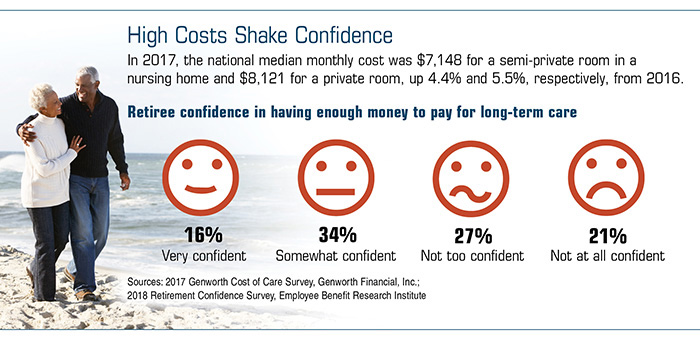An Unbiased View of Pacific Prime
An Unbiased View of Pacific Prime
Blog Article
The Of Pacific Prime
Table of ContentsAll about Pacific PrimeAn Unbiased View of Pacific PrimeLittle Known Facts About Pacific Prime.Examine This Report about Pacific Prime
In the majority of states, the insurance company is needed to send you a copy of the adjustments to your plan. It is essential that you read Endorsements or Motorcyclists so you comprehend exactly how your policy has changed and if the plan is still adequate to meet your requirements. To obtain a copy of your insurance coverage plan, please call your insurance representative or company.
The Institute of Medicine (IOM) Board on the Effects of Uninsurance launches a prolonged exam of proof that addresses the relevance of medical insurance coverage with the publication of this record. Protection Matters is the initial in a collection of six reports that will certainly be provided over the next two years recording the truth and repercussions of having an approximated 40 million people in the United States without medical insurance coverage.

The Greatest Guide To Pacific Prime
The goal of this collection of studies is to refocus plan attention on a historical problem. Following the longest economic expansion in American history, in 1999, an approximated one out of every 6 Americans32 million adults under the age of 65 and even more than 10 million childrenremains uninsured (Mills, 2000).

10 percent of the populace make up 70 percent of health care expenses, a connection that has actually remained continuous over the previous 3 decades (Berk and Monheit, 2001) - international health insurance. Hence health insurance coverage continues to serve the function of spreading out threat even as it increasingly finances regular treatment. From the point of view of healthcare carriers, insurance policy carried by their patients helps secure a profits stream, and communities gain from financially practical and secure healthcare experts and organizations
Federal government gives medical insurance to populations whom the exclusive market might not offer properly, such as impaired and senior persons, and populations whose access to health treatment is socially valued, such as kids and expecting ladies. The supreme ends of health insurance protection for the individual and areas, consisting of office areas of workers and companies, are boosted health end results and high quality of life.
3 Easy Facts About Pacific Prime Explained
Employees place health insurance policy initially without a doubt in importance among all the advantages used in the workplace (Salisbury, 2001). Although there have actually been sizable financial investments of personal and public funds to supply health insurance policy, many individuals still have no coverage. Despite comprehensive coverage of survey findings and healthcare research study results, the basic public stays confused and misinformed regarding Americans without wellness insurance and the implications of lacking insurance coverage.

Without doubt, the intricacy of American health care financing systems and the wide range of resources of information add to the public's complication and uncertainty about medical insurance data and their analysis. This record and those that will certainly follow aim to distill and provide in easily reasonable terms the considerable study that bears on questions of health and wellness insurance coverage and its relevance.
Fifty-seven percent of Americans questioned in 1999 thought that those without medical insurance are "able to obtain the treatment they require from medical professionals and medical facilities" (Blendon et al., 1999, p. 207). In 1993, when national interest was focused on the problems of the uninsured and on pending healthcare regulations, simply 43 percent of those surveyed held this belief (Blendon et al., 1999).

They additionally get fewer preventative solutions and are less likely to have normal look after chronic problems such as high blood pressure and diabetic issues. Chronic diseases can bring about costly and disabling complications if they are not well managed (Lurie et al., 1984; Lurie et al., 1986; Ayanian et al., 2000). One nationwide survey asked even more than 3,400 adults concerning 15 highly major or dark conditions.
Some Ideas on Pacific Prime You Should Know
Added proof is provided later on in this chapter in the discussion of insurance and access to health care. https://packersmovers.activeboard.com/t67151553/how-to-connect-canon-mg3620-printer-to-computer/?ts=1712004612&direction=prev&page=last#lastPostAnchor. People without medical insurance are young and healthy and balanced and choose to do without protection. Almost fifty percent (43 percent) of those surveyed in 2000 thought that people without medical insurance are more most likely to have wellness issues than people with insurance coverage
Voters and policy manufacturers in focus team discussions identify those without insurance policy as young individuals that have the possibility to be covered and feel they do not require it (Concierge Novelli, 2001). Contrasted to those with at the More Info very least some personal coverage, the uninsured are much less most likely to report being in superb or extremely excellent health (Firm for Healthcare Research Study and Quality, 2001).
SOURCE: Facility for Cost and Financing Researches, Company for Health Care Study and Quality, based on MEPS information. Young person between 19 and 34 are much more most likely to do not have health insurance than any type of various other age group. This is primarily because they are less often eligible for employment-based insurance coverage as a result of the nature of their work or their short tenure in it.
The assumption that people without insurance have better-than-average health and wellness follows from perplexing the reasonably young age account of the uninsured with the far better health, generally, of younger persons. This obscures the link between health condition and medical insurance. For those without accessibility to work environment health and wellness insurance coverage, poor health is a potential barrier to buying nongroup protection since such protection might be very valued, omit preexisting problems, or be simply inaccessible.
Report this page